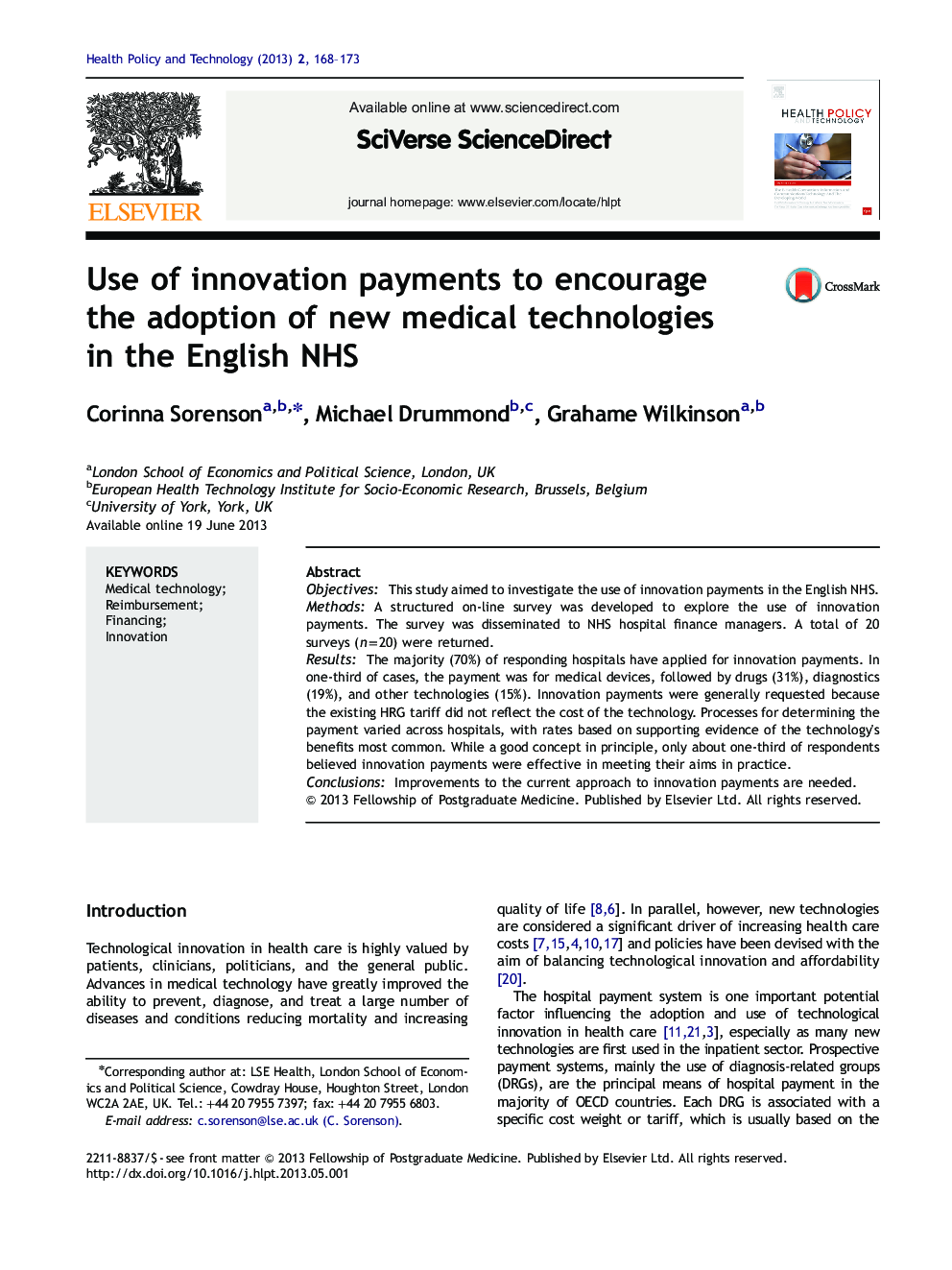| Article ID | Journal | Published Year | Pages | File Type |
|---|---|---|---|---|
| 3327370 | Health Policy and Technology | 2013 | 6 Pages |
•The use of innovation payments is fairly common in the English NHS.•Agreements are put into place for one to three years and agreed between hospitals and commissioners.•The terms of payments are frequently based on evidence of therapeutic benefit and costs.•A lack of standardized processes or criteria often deters their effective implementation.•Improvements are needed if innovation payments are to successfully meet their aims.
ObjectivesThis study aimed to investigate the use of innovation payments in the English NHS.MethodsA structured on-line survey was developed to explore the use of innovation payments. The survey was disseminated to NHS hospital finance managers. A total of 20 surveys (n=20) were returned.ResultsThe majority (70%) of responding hospitals have applied for innovation payments. In one-third of cases, the payment was for medical devices, followed by drugs (31%), diagnostics (19%), and other technologies (15%). Innovation payments were generally requested because the existing HRG tariff did not reflect the cost of the technology. Processes for determining the payment varied across hospitals, with rates based on supporting evidence of the technology's benefits most common. While a good concept in principle, only about one-third of respondents believed innovation payments were effective in meeting their aims in practice.ConclusionsImprovements to the current approach to innovation payments are needed.
